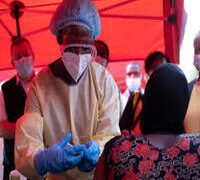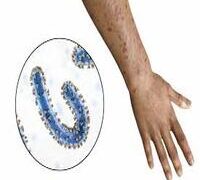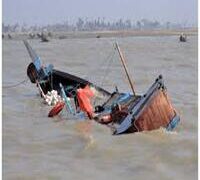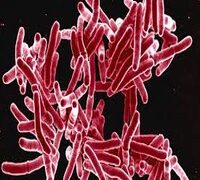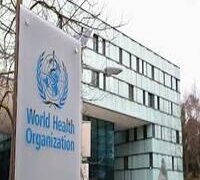A deadly disease is a disease that kills; not all diseases are deadly. We can rate a disease in terms of how deadly it is by the number of persons it killed in a given period.
The nine most deadly diseases in the world are discussed below:
9: The 9th position is occupied by none other than Diarrheal diseases….. Diarrhoea is the passage of watery stools more than three times a day leading to loss of water and salt… Frequent passage of solid stool is not diarrhea nor is the passage of soft stool by breast fed babies. There are three types of diarrhea: acute watery diarrhea, dysentery and persistent diarrhea (lasting beyond two weeks). In the case of dysentery, stooling is loose and more than three times but mixed with blood and mucus. Diarrhoea spreads through hands, water and food contaminated by faeces of an infected person.
About 1.7 million cases of diarrhoea occur annually worldwide with estimated 780,000 deaths in children under 5 years of age.
8: The 8th position is seized by HIV/AIDS…. The Human Immunodeficiency Virus (HIV) is said to have its origin in D.R. Congo in Central Africa. The virus may have been around for a very long time but gained prominence which has remained till today in the 1970s. Today, HIV/AIDS is a global problem though prevalence level varies widely from country/region to country/region.
There are about 35 million people living with HIV globally with about 70 percent of this number in Sub-Saharan Africa. South Africa/Southern Africa have the largest number of people living with HIV, followed by East Africa, Central Africa and West Africa. The age group most affected is 15-24 years…. About 1.1 million persons died of HIV related illnesses in 2015.
7: Tuberculosis is the 7th world deadliest disease
TB occurs all over the world but there is a great difference in prevalence between the developed world and the rest of the world. This could be attributed to early diagnosis and treatment, better nutrition, better housing and preventive measures.
About 10.4 million new TB cases were recorded in 2015 worldwide according to the World Health Organization; men accounted for 5.9 million cases, women 3.5 million cases, children 1 million cases and people living with HIV 1.2 million cases. About 60 percent of the new cases occurred in India, Indonesia, China, Nigeria, Pakistan and South Africa. In the same year about 580,000 new drug-resistant TB cases were recorded.
TB claimed 1.4 million lives globally in 2015, making it the 7th most deadly disease.
6: Our 6th position in the ladder of world’s most deadly diseases is occupied by Diabetes Mellitus.
Diabetes Mellitus is a persistent high level of sugar in the blood; it can be type 1 or type 2. Type 1 is found in the young (children/teenagers) and due to heredity in most cases; the person does not produce insulin. Type 2 is found in adults and is due mainly to resistance to insulin or low level of insulin production. Untreated or poorly treated diabetes especially Type 2 has well known complications such as stroke, kidney failure, blindness, lower limb amputation and heart attack. These complications can be reduced by adequate control of the condition, regular check-up and prompt treatment of any complications as they arise.
According to the World Health Organization, about 422 people had diabetes mellitus in 2014 from 108 million in1980. In 2014 about 8.5 percent of persons over 18 years of age had diabetes worldwide and in 2012 the disease was directly responsible for about 1.5 million deaths globally. The World Health Organization believes this will continue to rise in the years ahead.
5: Holding the 5th position that shouldn’t be overlooked is ….. Respiratory tract cancers
The respiratory tract cancers include cancer of the trachea, cancer of the bronchi and cancer of the lungs; of the three, lung cancer is the most deadly and in fact, lung cancer is responsible for the greatest number of deaths from Respiratory Tract Cancer; in 2012, it accounted for about 1.6 million deaths, about 2.9 percent of all deaths globally.
4: Chronic Obstructive Pulmonary Disease happens to be the fourth most deadly disease worldwide.
It is a disorder characterized by obstruction of airflow through the bronchi, bronchioles and alveoli of the lungs due to chronic bronchitis or emphysema. The person affected finds it hard to breathe. Men and women are affected equally; a prominent risk factor is exposure to in-door pollution such as cooking or heating smoke.
The condition occurs globally, in high-income, middle-income and low-income countries, however according to the World Health Organization (WHO), almost 90 percent of the deaths from the disease occur in the low-income and middle-income countries. WHO‘s estimate puts the total deaths from the disease in 2005 at 3 million (about 5 percent of all deaths) with about 65 million people affected globally.
3: One never gets to underestimate the power of a disease outbreak, that’s why the Lower Respiratory Tract Diseases Group occupies the third position on the list of world’s most deadly diseases. The Lower Respiratory Tract Diseases group includes Pneumonia, Acute bronchitis, Influenza and Lung abscess; of these, Pneumonia is the worst. In 2013, there were about 150 million cases of the diseases with about 3.1 million deaths globally; about 5.5 percent of total deaths in the world.
2: Many wonder how and why this disease taking the second position came to be.
Stroke is the second world’s most deadly disease condition globally;
It is a condition which occurs when a blood vessel which supplies oxygenated blood to the brain ruptures or becomes blocked. If any of the two happens the brain cells in the part of the brain affected die within minutes.
Risk factors for stroke include high blood pressure, smoking, obesity, unhealthy diet, high blood cholesterol and lack of physical activity. According to the World Health Organization (WHO), stroke accounted for 6.7 million deaths globally in 2012, just behind the trophy holder.
1: Now the moment you’ve all been waiting for…. You didn’t expect it but it happens to be real.
The world’s most deadly disease today is Coronary Heart Disease or Coronary Artery Disease or Ischaemic Heart Disease. The heart is supplied blood by two blood vessels: the right coronary artery and the left coronary artery. The two arteries supply the heart muscles by dividing into several branches.
If any of the blood vessels supplying the heart becomes narrow or blocked, heart attack or coronary heart disease results. According to the World Health Organization, coronary heart disease accounted for about 7.4 million deaths globally in 2012 making it the number one killer.
Risk factors for coronary heart disease. include high blood pressure, obesity, unhealthy diet, smoking, high blood cholesterol and lack of physical activity.
| ReplyForwardAdd reaction |









